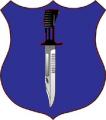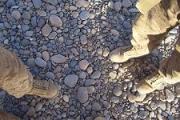There have been several interesting proposals for squad through battalion-level organizations.
I'm interested in the relationships between organization, span of control, and "effective" weapon ranges relative to these proposals. It seems to me that span of control and effective weapon ranges are core organizational drivers but these are usually either assumed in such discussions or left out all together which can result in significant battlefield friction.
For example, if you look at typical WWII organizations there's a clear correlation between effective weapon range and unit frontage and depth at various levels of command from platoon to battalion. In other words a given unit level is expected to control a given amount of frontage and depth based on its size/number of sub-units and equipment. But there were also huge C3limits in WWII that have been addressed today but which are still not completely solved (see Ambush Alley for an excellent description of the limits of current battlefield communications technology.)
This is nothing new but the acceleration curve for battlefield dispersion driven by the firepower available to light infantry has increased rapidly in the 20th century and continues to do as demonstrated in Afghanistan where U.S. special forces used PGMs as WWII troops used 60mm mortars (well, almost): to place indirect fire on enemy troops with great agility. At the same time it's easy to be lulled into believing that strategic "stand-off" weapons directed by small units of light infantry is sufficient to win modern wars. Such technology can be used to smash conventional forces or even massed irregular forces but it faces severe limitations against dispersed unconventional forces determined to resist.
There is also often difference of opinion on how many sub-units a given level of command can control and their appropriate level of dispersion, especially when one considers that a minimal level of situational awareness is required to excercise command effectively. And there is often disagreement on the unit level at which certain weapons should be organic, attached, or left under the control of higher level leaders.
Books such as Not Mentioned in Despatches, Not a Good Day to Die, Ambush Alley, and No True Glory do an excellent job of describing the friction that occurs when higher level leaders (eg battalion+) try to excercise too much control over lower level tactical situations and how lack of equipment at a given level can impede a lower level unit from accomplishing its tactical mission.
So here are a few questions for this group. My involvement in these topics is limited to development of underlying technologies for reconaissance systems (tactical to strategic) so I'm always fascinated by (and greatly respect) the opinions of those with experience at the sharp end.
1. At a given a leader's level (squad, platoon, company, and battalion) how much space (frontage and depth) should he expect to fight as determined by four broad categories of terrain? (eg open desert, rolling countryside, urban, jungle). Assume a typical modern western battalion with respect to technology (eg Blue Tracker, etc.), differentiating between mech and leg infantry as needed. Assume ongoing combat operations against opposing light infantry (regular or irregular) and/or traditional combined arms opfor as opposed to security and stability operations in (relatively) calm urban centers with dense civilian populations going about their daily business. So, collateral damage is still a concern but it's "open warfare" Fallujah-style rather than doing neighborhood patrols while handing out candy to children in Basra. There are of course lots of fields manuals and conventional wisdom on the subject but I still encounter interesting differences of opinion, often driven by the individual's personal experience.
2. At each of the levels, given the amount of space expected to be fought at that level and available transport, what sort of weapons should be organic? Attached? Left under control of higher level leaders? This is covered by some other threads but here it's explicitly tied to terrain and area of operations at each given level of command and seeks comment on specific ranges (do also consider logistics and transport with respect to sub-unit dispersion, ammo supply/use rate, etc.).
For example in one thread I noticed a difference of opinion with respect to ATGMs and ATRLs and their relative value in urban warfare given assumed engagement ranges. One fellow assumed very short ranges and saw ATGM as overkill while another saw urban terrain as allowing 2,000m+ engagements and ATGMs as valuable. Such assumptions are (should be) key drivers to determine TO&E but these assumptions are often left unspoken.
And if one proposes a given weapon system should exist at a given level, what are the assumptions for its operation? Always concentrated and directed at higher levels? If attached, at what level of dispersion before becoming too ineffective? Given typical engagement ranges, weapon effective range, and unit/sub-unit dispersion who's in the best position to control a given weapon system in light of that individual's typical situational awareness and probable reaction times to battlefield developments? (eg if a system is placed too high it can't exploit tactical opportunities, too low and it becomes a burden or isn't aware of opportunities.)
3. Based on the two items above, what should sub-units look like and what level of independece should be expected of them? How should one balance directive command and restricitve control at various levels as determined by tactical situation, C3I, and troop quality considerations? This last item probably deserves its own thread but here is tied directly to how much area a given level of command is expected to fight as determined by various factors such as terrain, etc.












Bookmarks